Keeping your home and family safe is a big deal. A good home security system can make you feel secure. With smart tech getting better, security cameras are now key to a solid security plan.
Today, having a strong security system is more important than ever. It keeps unwanted visitors away and lets you watch your home from anywhere. When picking a system, think about video quality, night vision, and how easy it is to set up.
Key Takeaways
- Importance of having a home security system for peace of mind
- Key features to consider when choosing a security system
- Benefits of security cameras in a home security setup
- How to select the right security system for your home
- Understanding the role of smart technology in home security
Understanding Home Security Systems
It’s important for homeowners to understand how home security systems work. These systems aim to keep your home and family safe from threats like intruders, fires, and other dangers.
What is a Home Security System?
A home security system is a network of devices that watch over your home. It includes smart home surveillance cameras, sensors on doors and windows, motion detectors, and alarm systems. Together, they offer a strong defense against intruders and alert you to any odd activity.
Importance of Security Cameras in Home Protection
Security cameras are key in keeping your home safe. They watch over your home and scare off intruders. Smart home surveillance cameras have special features like clear video, night vision, and motion alerts. They are a must-have for any home security setup.
“The presence of security cameras can significantly reduce the likelihood of a break-in, as intruders are less likely to target homes with visible surveillance.”
Components of a Complete Security System
A full home security system has several important parts. These include:
- Security cameras
- Door and window sensors
- Motion detectors
- Alarm systems
- Smart home integration for remote monitoring
For more details on top home security systems, check out https://www.security.org/home-security-systems/best/.
| Component | Function | Benefits |
|---|---|---|
| Security Cameras | Visual surveillance | Deterrent effect, evidence collection |
| Door and Window Sensors | Detect opening or breaking | Alert system for possible intruders |
| Motion Detectors | Detect movement in a certain area | Set off alarms or alerts |
Key Features to Look for in Security Cameras
To keep your home safe, it’s important to know what makes a good security camera. Look for features that boost your home’s security and make it easier to use.
Resolution and Image Quality
The camera’s resolution and image quality are key. High-resolution cameras like 1080p or 4K capture clear images. This helps you see who’s there and what’s happening.
Key considerations for resolution and image quality include:
- Resolution (720p, 1080p, 2K, 4K)
- Field of view (wide-angle lenses)
- Low-light sensitivity
Night Vision Capabilities
Night vision is essential for cameras to work well at night. Cameras with infrared or night vision can see in the dark.
Types of night vision:
- Infrared (IR) LEDs
- Night vision mode
- Starlight technology for low-light conditions
Motion Detection Sensors
Motion sensors are a must-have. They alert you to any movement. This can start recordings, send alerts, or sound alarms.
| Feature | Description | Benefit |
|---|---|---|
| Motion Detection | Detects movement within the camera’s view | Alerts homeowners to possible threats |
| Customizable Sensitivity | Allows adjusting how sensitive it is | Reduces false alarms |
| Alerts and Notifications | Sends alerts to phones or emails | Keeps homeowners updated on security |
Two-Way Audio Function
The two-way audio lets you talk in real-time. It’s great for scaring off intruders or talking to family or visitors from afar.
When picking security cameras, think about these features. They’ll help you find the right system for your home’s security needs.
Types of Home Security Cameras
Securing your home means knowing about the different home security cameras. Homeowners have many options, each for a specific purpose and setting.
Indoor Cameras
Indoor cameras watch over your home’s inside. They’re small and easy to hide, great for spots like corners or shelves. They often have night vision and motion detection, so you can always see what’s happening.
Key Features:
- Compact design for discreet placement
- Night vision for 24/7 monitoring
- Motion detection for alerts
Outdoor Cameras
Outdoor cameras, or outdoor home surveillance cameras, handle all kinds of weather. They’re stronger and more weather-proof than indoor ones.
For the best outdoor security cameras, check out https://www.security.org/security-cameras/best/. It lists the top picks.
Wired vs. Wireless Cameras
Wired cameras have a steady connection and no battery worries. But, they’re harder to set up. Wireless security camera systems are easier to install and move around. Yet, they need battery checks more often.
Considerations for Choosing:
- Installation complexity and cost
- Power supply and battery life
- Flexibility and scalability
Doorbell Cameras
Doorbell cameras are popular for being both a doorbell and a security camera. They let you see, hear, and talk to visitors, adding to your home’s safety.
“The integration of doorbell cameras into home security systems represents a significant advancement in surveillance technology, adding a layer of protection and convenience.”
Knowing about the different home security cameras helps homeowners pick the right ones. This ensures they meet their home’s security needs.
Benefits of Having a Home Security System with Cameras
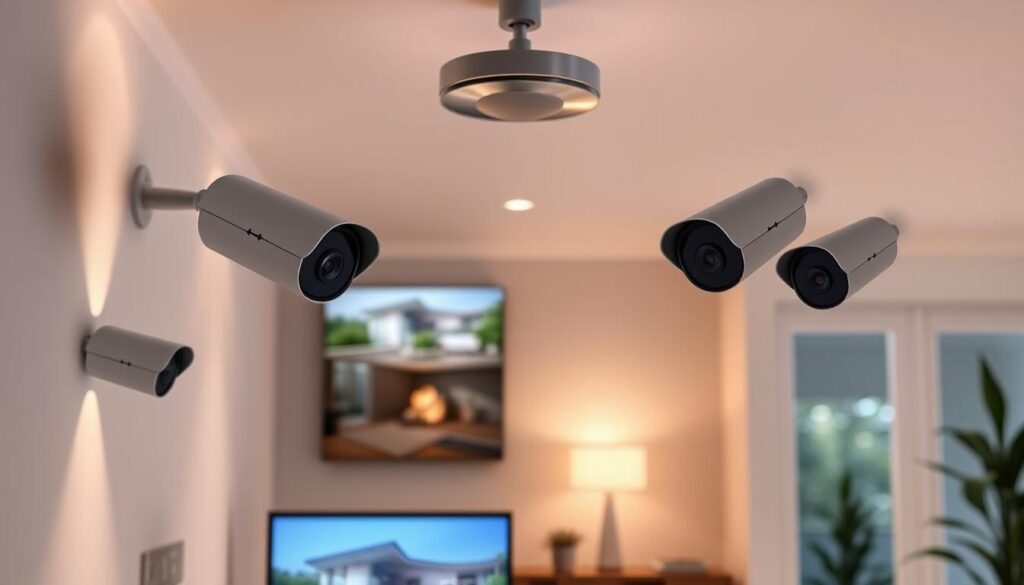
A home security system with cameras offers many benefits. It makes your home safer and more secure. Thanks to smart home technology, adding cameras is now easier and cheaper.
Enhanced Surveillance and Monitoring
One big plus of a home security system with cameras is better surveillance. You can watch your property, inside and outside, in real-time. You’ll get alerts if something suspicious happens.
Security experts say, “A visible security camera can scare off intruders.”
“The presence of security cameras can significantly reduce the likelihood of a break-in, as burglars are less likely to target a property with visible surveillance.”
Incident Deterrence and Safety Enhancement
Security cameras can scare off intruders, making your home safer. Studies show homes with cameras are less likely to be burglarized.
ADT Home Security Solutions offer systems with cameras for extra protection.
Remote Access and Control
Modern systems let you watch your home from anywhere. This is great for people who travel a lot or have more than one home.
You can get alerts, see live footage, and talk to visitors with two-way audio. It’s convenient and adds to your security.
Integration with Smart Home Devices
Today’s security systems work well with other smart home devices. This makes your home a smart, safe place. You can control lights, temperature, and security from one place.
By linking your security system with smart devices, you make your home safer and more efficient. It becomes a more comfortable and secure place to live.
Popular Home Security Brands in the U.S.
Several top brands are leading the way in home security in the U.S. Homeowners have many options for their security systems. Knowing what these brands offer can make choosing easier.
Ring Security Systems
Ring is famous for its video doorbells and security cameras. Ring Security Systems are Wi-Fi enabled. This makes them easy to install and connect with other smart devices.
Arlo Camera Systems
Arlo is a big name in home security cameras. Arlo Camera Systems are known for their wireless setup, clear video, and motion detection.
Nest Secure Products
Nest, owned by Google, offers a full home security package. Nest Secure Products include cameras, door sensors, and alarms. They can all be managed through one app.
ADT Home Security Solutions
ADT is a trusted name in home security, updated for today’s tech. ADT Home Security Solutions offer professional monitoring and a range of devices. This includes cameras and smart home integrations.
Here’s a quick look at what each brand offers:
| Brand | Key Features | Professional Monitoring |
|---|---|---|
| Ring | Video doorbells, Wi-Fi enabled cameras, smart home integration | No |
| Arlo | Wireless cameras, HD video, motion detection | Optional |
| Nest | Comprehensive security systems, Google integration | Yes, through partners |
| ADT | Professional monitoring, smart home devices, security cameras | Yes |
Choosing the right home security brand depends on your needs. Consider the devices you want, if you need professional monitoring, and how it will work with your smart home.
Comparing Security Systems: Wireless vs. Wired
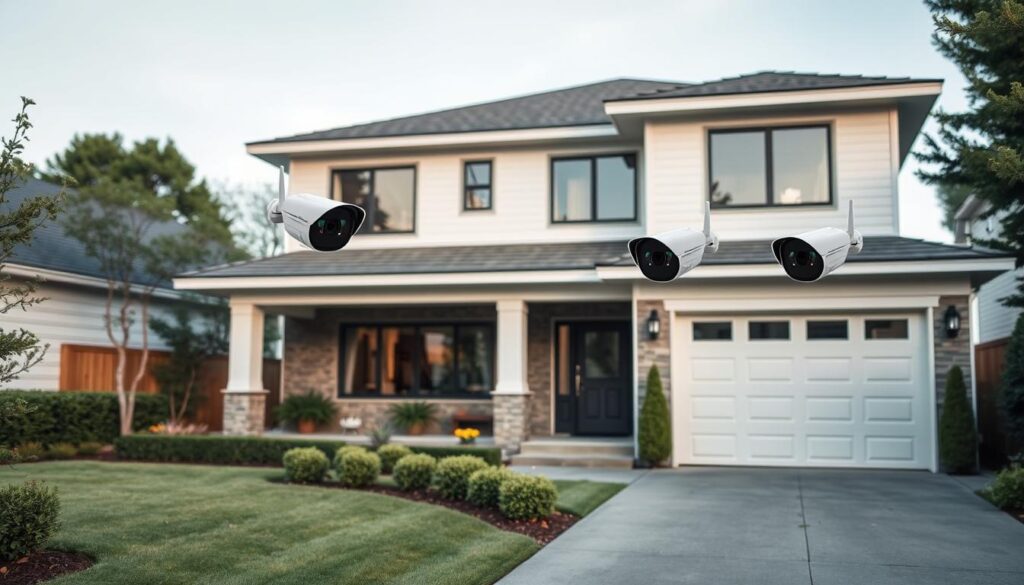
It’s important to know the differences between wireless and wired security systems. Both have good points and bad points. These are key when deciding what’s best for your home.
Pros and Cons of Wireless Systems
Wireless security camera systems are easy to set up and flexible. You can place cameras anywhere without cables. But, they can be affected by interference and hacking if not secured well.
Some benefits of wireless systems are:
- Easy to install without extensive wiring
- Flexible camera placement
- Portability, allowing you to move cameras as needed
But, wireless systems also have downsides:
- Potential interference from other devices
- Increased risk of hacking if security measures are not robust
- Dependence on battery life, requiring regular recharging or replacement
Pros and Cons of Wired Systems
Wired security systems are reliable and stable. They face less interference and hacking because they’re directly connected to your home. For more details on wired vs. wireless security, check out this resource.
The benefits of wired systems are:
- Reliable connection with less risk of interference
- Enhanced security against hacking
- No need to worry about battery life
But, wired systems also have downsides:
- More complex and invasive installation process
- Limited flexibility in camera placement due to wiring constraints
- Potential for higher upfront costs due to installation complexity
Choosing the Right Option for Your Home
When choosing between wireless and wired systems, think about your home’s layout, security needs, and budget. For the best value, look at home security camera deals.
The right choice depends on your situation. Wireless is good for ease and flexibility. Wired is better for security and reliability.
Installation Options for Security Cameras
Homeowners have many choices for installing security cameras. Each option has its own benefits and things to think about. The choice between doing it yourself or getting professional help depends on several things. These include how complex the system is, your tech skills, and your budget.
DIY Installation vs. Professional Services
Many homeowners choose to install cameras themselves to save money. Modern cameras are easy to set up, thanks to wireless connectivity and simple mounting. But, for more complicated systems or if you want expert advice, professional installation services can offer peace of mind. They make sure your system works its best.
- DIY Advantages: It’s cheaper, you can do it when you want, and it’s good for simple jobs.
- Professional Advantages: They know a lot, can set up your system fully, and might work better with your smart home.
Factors to Consider for Installation
When setting up security cameras, there are important things to think about. These ensure your cameras work well. Here are a few:
- Power Supply: Make sure cameras get enough power, whether from batteries or wires.
- Internet Connectivity: For wifi security cameras, a strong and safe internet connection is key.
- Camera Placement: Place cameras to watch important areas like doors, windows, and outside spaces.
Ensuring Optimal Camera Placement
Where you put your cameras is very important. They should see clear images of where people might come in and important spots. Think about the view, so cameras aren’t blocked by things like trees or buildings. Outdoor cameras need to be weatherproof and have the right housing.
By thinking about these installation options and factors, homeowners can set up a strong home security system. This system will meet their needs and give them more protection and peace of mind.
Subscription Plans and Monitoring Services
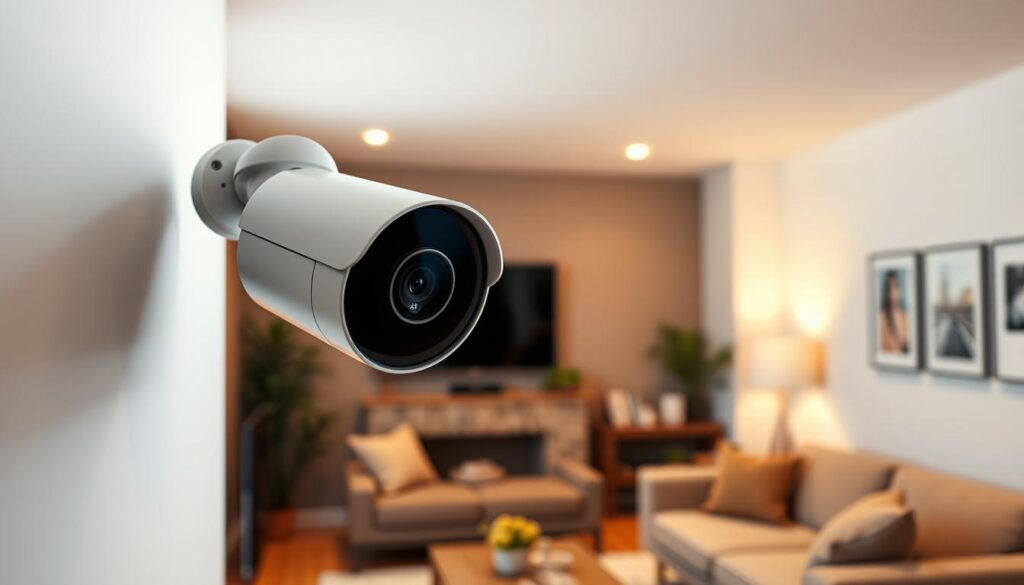
The quality of a home security system depends on its monitoring services and subscription plans. Homeowners need to think about several things when picking a plan. They should consider what they need for security and how much they can spend.
Overview of Monitoring Options
Home security companies offer different monitoring options. You can choose to monitor your system yourself or have professionals do it for you. Self-monitoring sends alerts to your phone or computer, so you can handle security issues yourself. Professional monitoring, on the other hand, has a team watching your system 24/7 and can call emergency services if needed.
Key Monitoring Options:
- Self-monitoring
- Professional monitoring
- Smartphone app control
Costs Associated with Monthly Subscriptions
Monthly costs for home security systems vary a lot. Basic plans start at $10-$20 a month. But, plans with more features like professional monitoring and smart home integration can cost $50-$100 a month.
Factors Influencing Subscription Costs:
- Level of monitoring service
- Number of cameras and devices
- Additional features like smart home automation
| Plan Type | Monthly Cost | Features |
|---|---|---|
| Basic | $10-$20 | Self-monitoring, limited camera support |
| Premium | $30-$50 | Professional monitoring, multiple camera support, smart home integration |
| Elite | $50-$100 | Advanced professional monitoring, extensive camera support, complete smart home automation |
Which Plan is Right for You?
Choosing the right plan depends on your security needs, budget, and preferences. Think about your property size, monitoring needs, and any extra features you want. This includes smart home integration or advanced analytics.
By looking at these factors and comparing different companies, you can find a plan that meets your needs. It should offer good security, be easy to use, and fit your budget.
How to Choose the Best Home Security System
To keep your home safe, it’s important to pick the right security system. You need to think about your home’s needs, your budget, and what other people say about the system.
Assessing Your Home’s Security Needs
Start by looking at your home’s layout and where it might be vulnerable. Think about how many doors and windows you have. Also, think about areas that are hard to watch.
Outdoor cameras are great for watching big areas like backyards or driveways. They should have a wide view and work at night. Inside, you’ll want cameras for places like living rooms and hallways.
Budget Considerations and Cost-Effectiveness
Security systems cost different amounts, based on what they offer. Set a budget and find systems that fit it well. Remember, the cost isn’t just the initial price. You also need to think about monthly subscription fees for monitoring.
Some systems might be cheaper because they include cameras and monitoring together. For example, checking out security systems can help you see different pricing options.
| Feature | Basic Plan | Premium Plan |
|---|---|---|
| Number of Cameras | 2 | 5 |
| Monitoring Service | Self-Monitoring | 24/7 Professional Monitoring |
| Cloud Storage | 7 Days | 30 Days |
| Cost | $9.99/month | $29.99/month |
Evaluating Customer Reviews and Ratings
What others say about a security system is very helpful. Look for reviews on different websites to get a full picture. Pay attention to how easy it is to set up, customer support, and any false alarm issues.
Top-rated home security cameras usually have good reviews. People often talk about the video quality, how well it detects motion, and if it works with smart home devices.
By looking at your home’s needs, your budget, and what others say, you can choose the best security system for your home.
Recommended Features for Smart Home Integration
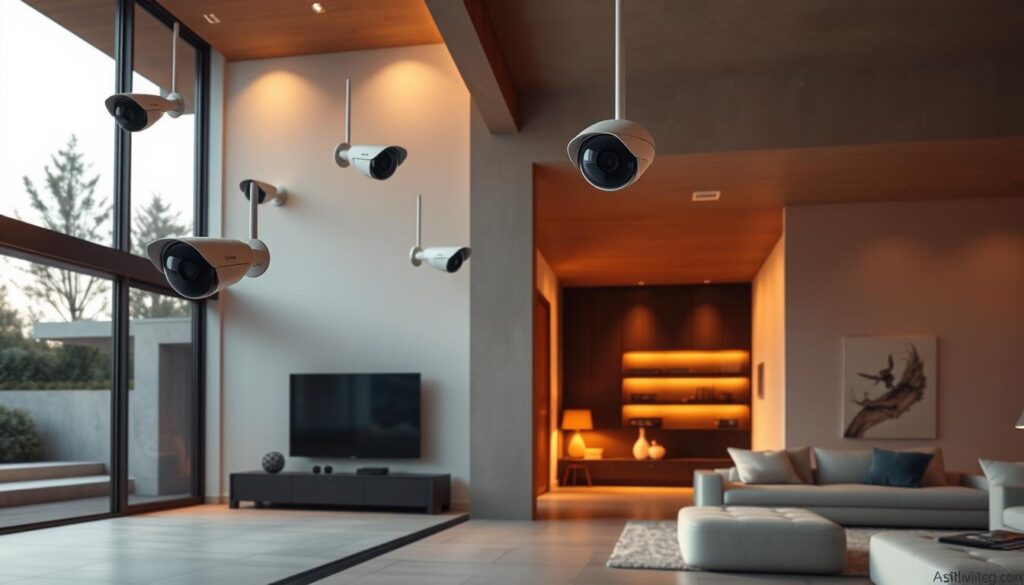
Adding your home security system to smart home tech makes your home safer and more convenient. It lets you control your home’s security and comfort easily through one interface. This makes your life more streamlined and automated.
Compatibility with Smart Assistants
Look for a home security system that works with smart assistants like Amazon Alexa or Google Assistant. This lets you control your cameras, get alerts, and see live footage with voice commands or an app. For example, you can ask Alexa to show your front door camera on your Echo Show.
Automated Alerts and Notifications
A good home security system sends you automated alerts and notifications for any odd activity. These alerts can come via email, SMS, or an app, keeping you updated on your home’s security. Choose a system that lets you pick what alerts you get, so you don’t get too many.
Customizable Settings for Enhanced Control
Being able to change settings is key for a home security system. Look for systems that let you tweak sensitivity, set up alert zones, and plan out security plans. For example, you might want your outdoor cameras to be more sensitive at night or alert you only during certain times. For more info on top-rated alarm systems, visit top-rated alarm systems.
When picking a home security system with smart home integration, think about these important features:
- Works well with your current smart home devices
- Good at sending and handling alerts and notifications
- Let’s you change settings to fit your needs
- Works with many devices, like phones and tablets
For a detailed look at the best home security systems, including those with smart home features, see CNET’s guide to the best home security.
Legal Considerations for Home Security Camera Use
Using outdoor home surveillance cameras comes with legal issues homeowners need to know. As these cameras become more common, it’s key to understand the legal side to avoid trouble.
Privacy Laws and Regulations
Homeowners must follow privacy laws when setting up security cameras. They need to know the rules about recording in public and private areas. For example, cameras should not spy on neighbors or public spaces where people expect privacy. For more info on security camera laws, check out https://www.security.org/security-cameras/legality/.
It’s also important to know the laws in your state. Laws can differ a lot. Some states require telling people they’re being recorded, while others have stricter rules.
Best Practices for Ethical Surveillance
To watch over your home ethically, follow these tips. They help keep privacy while keeping your home safe. This includes:
- Pointing cameras at your own property
- Avoiding areas where neighbors or passersby might expect privacy
- Checking and updating camera spots and settings often
By following these steps, you can avoid legal problems and make sure your security is both effective and respectful.
Informing Visitors about Security Cameras
Telling visitors they’re being recorded is a nice thing to do and might be the law in some places. You can do this by:
- Putting up clear signs at your property’s entrance
- Telling guests yourself
- Making sure camera signs are easy to see
Being open about your security cameras can help build trust with neighbors and guests. This can lower the chance of complaints or legal issues.
Comparison of State Laws Regarding Security Cameras
| State | Recording Consent Requirement | Notification Requirement |
|---|---|---|
| California | Two-party consent | Yes, for private areas |
| New York | One-party consent | No specific requirement |
| Texas | One-party consent | Yes, for certain private areas |
Maintenance Tips for Home Security Systems
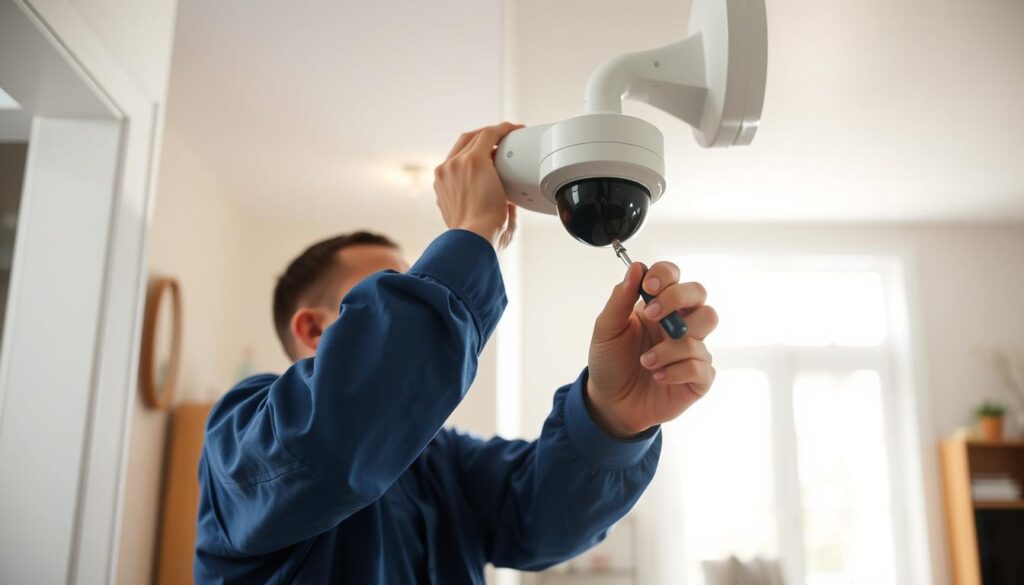
Keeping your home security system in top shape is vital for your safety. A working system keeps intruders away and gives you peace of mind. Regular upkeep is essential to keep it effective.
Regular Updates for Software and Firmware
It’s important to update your system’s software and firmware regularly. These updates fix security holes and make your system better. Here’s how to stay current:
- Enable automatic updates whenever possible.
- Regularly check for updates if automatic updates are not available.
- Follow the manufacturer’s instructions for updating software and firmware.
Updating your system’s software and firmware can resolve issues and improve overall performance.
Routine Camera Cleaning and Care
Security cameras face many environmental challenges. Regular cleaning and care are key to their performance.
To clean your security cameras:
- Use a soft, dry cloth to wipe away dust and debris.
- Avoid using harsh chemicals or abrasive materials that could damage the camera lens.
- Check the camera’s housing for any signs of wear or damage.
Troubleshooting Common Issues
Even with regular care, problems can happen with your home security system. Knowing how to fix common issues can help keep your system running smoothly.
| Issue | Troubleshooting Steps |
|---|---|
| Camera Not Recording | Check the camera’s power supply, ensure it’s properly connected, and verify that the recording settings are configured correctly. |
| Poor Video Quality | Clean the camera lens, check for firmware updates, and ensure the camera is properly positioned. |
| System Not Responding | Restart the system, check for software updates, and ensure all connections are secure. |
By following these tips, you can keep your home security system working well. Look into home security camera deals or affordable home security systems to boost your home’s security even more.
Future Trends in Home Security Systems
The future of home security is changing fast. New tech in AI, camera tech, and smart home systems is leading the way. Homeowners will soon have more advanced and effective security options.
Revolutionary Role of AI in Home Security
Artificial Intelligence (AI) is becoming key in home security. AI systems can look at data from cameras and alert homeowners to threats. A recent report says AI can cut false alarms by up to 90%.
For more on the latest trends, check out Reolink’s blog on home security trends.
AI also makes smart home cameras smarter. It adds features like facial recognition and object detection. This makes security systems more proactive, helping prevent problems before they start.
Advancements in Camera Technology
Camera tech is getting better too. Future cameras will have higher resolutions and better low-light performance. This means homeowners will get clearer and more detailed surveillance.
Cameras will also work better with AI and other smart devices. They can adjust lighting or alert homeowners to security issues automatically. This makes security systems more seamless and automated.
Predictions for Home Security in the Next Decade
In the next decade, home security will integrate more with smart home devices. This could lead to better security and a more enjoyable living space.
Security experts say the future of home security is in smart integration. They believe it will make homes safer and more convenient.
Security experts predict a future where home security is not just about protection but also about enriching the living experience through smart integration.
| Feature | Current Status | Future Development |
|---|---|---|
| AI Integration | Basic AI features available | Advanced AI capabilities for predictive security |
| Camera Resolution | Up to 4K resolution | Higher resolutions and improved low-light sensitivity |
| Smart Home Integration | Limited integration with some devices | Seamless integration with a wide range of smart devices |
For businesses and homeowners, keeping up with these trends is key. Check out Solarkiit’s article on business security systems for more insights.
Conclusion: Making an Informed Decision
Choosing the right home security system with cameras is very important. It needs careful thought about many things. A good system has cameras, monitoring services, and smart home features.
Key Considerations
When looking at home security camera deals, think about the camera’s quality and night vision. Also, consider the total cost and any monthly fees for monitoring.
Evaluating Your Options
It’s key to know what security you need, your budget, and smart home features. Look into brands like Ring, Arlo, and Nest for helpful information.
Final Considerations
Getting the best home security system with cameras can really improve your home’s safety. Take your time to look at all your options. Pick a system that fits your needs.


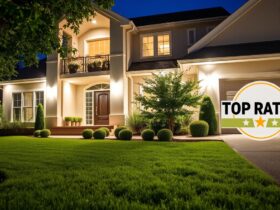

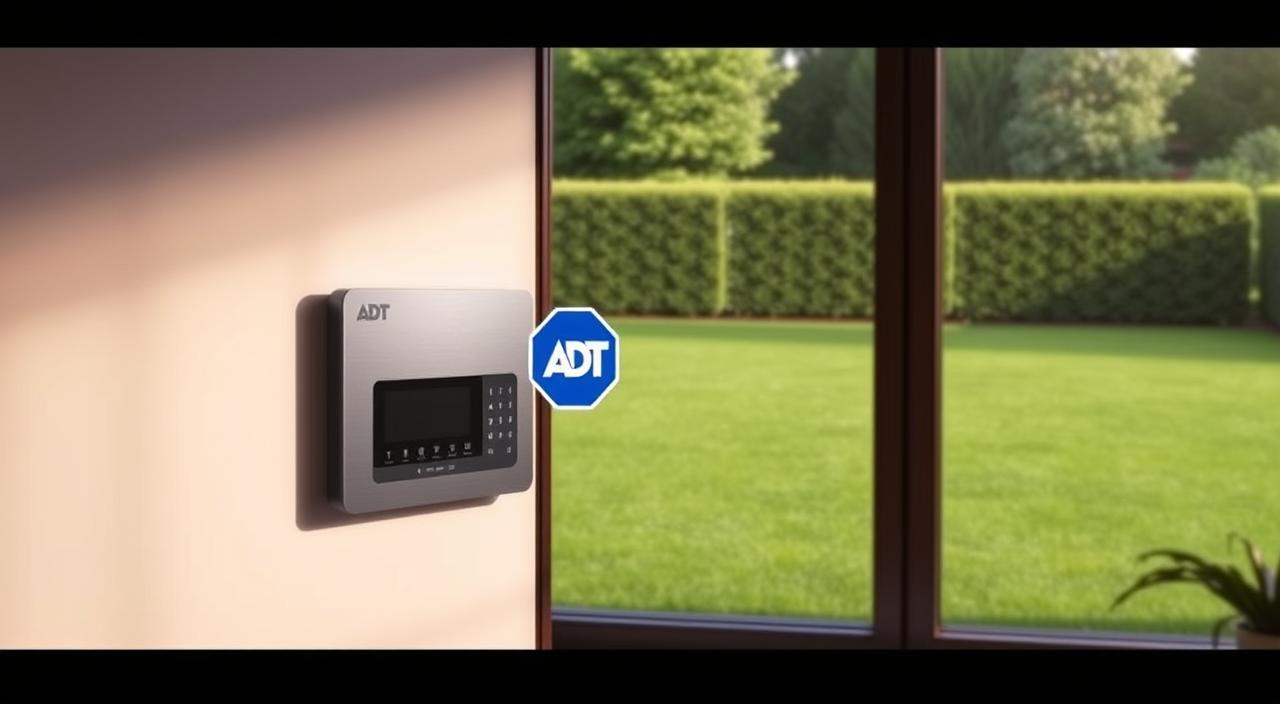
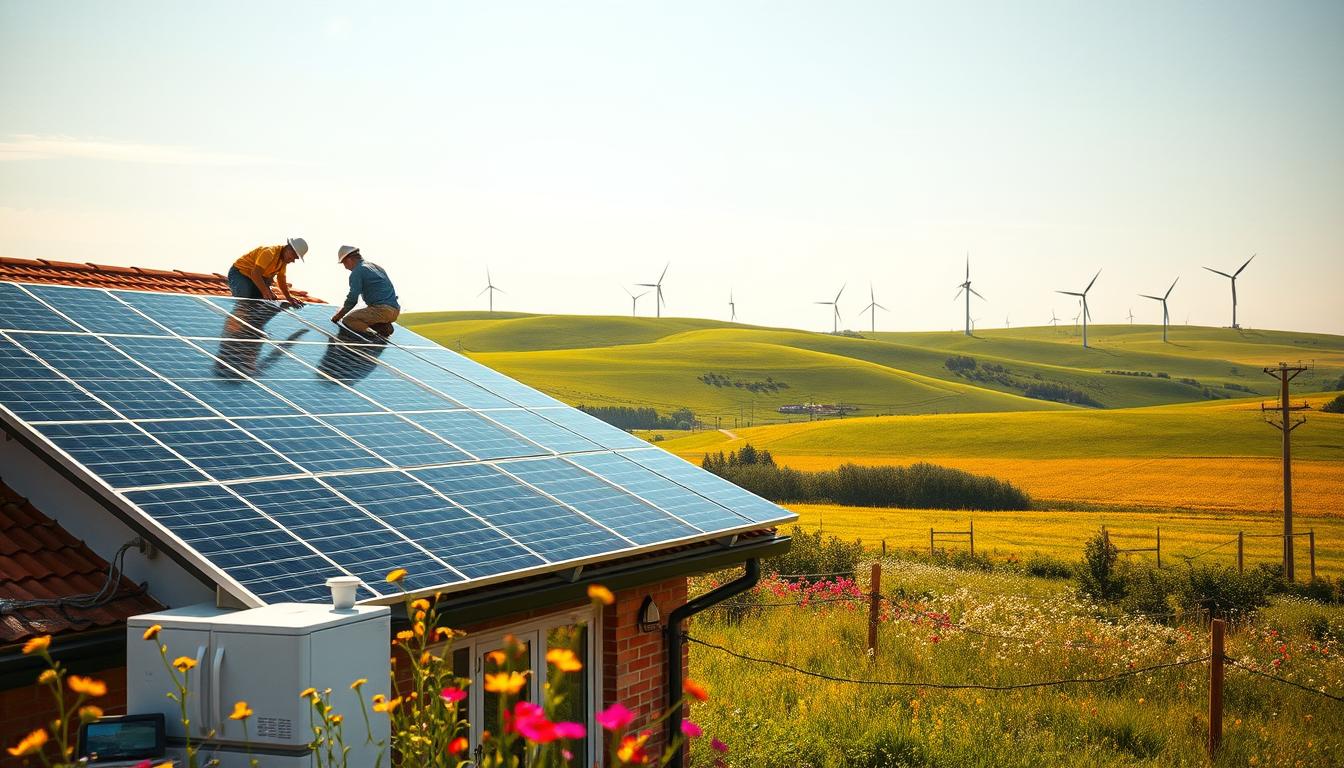
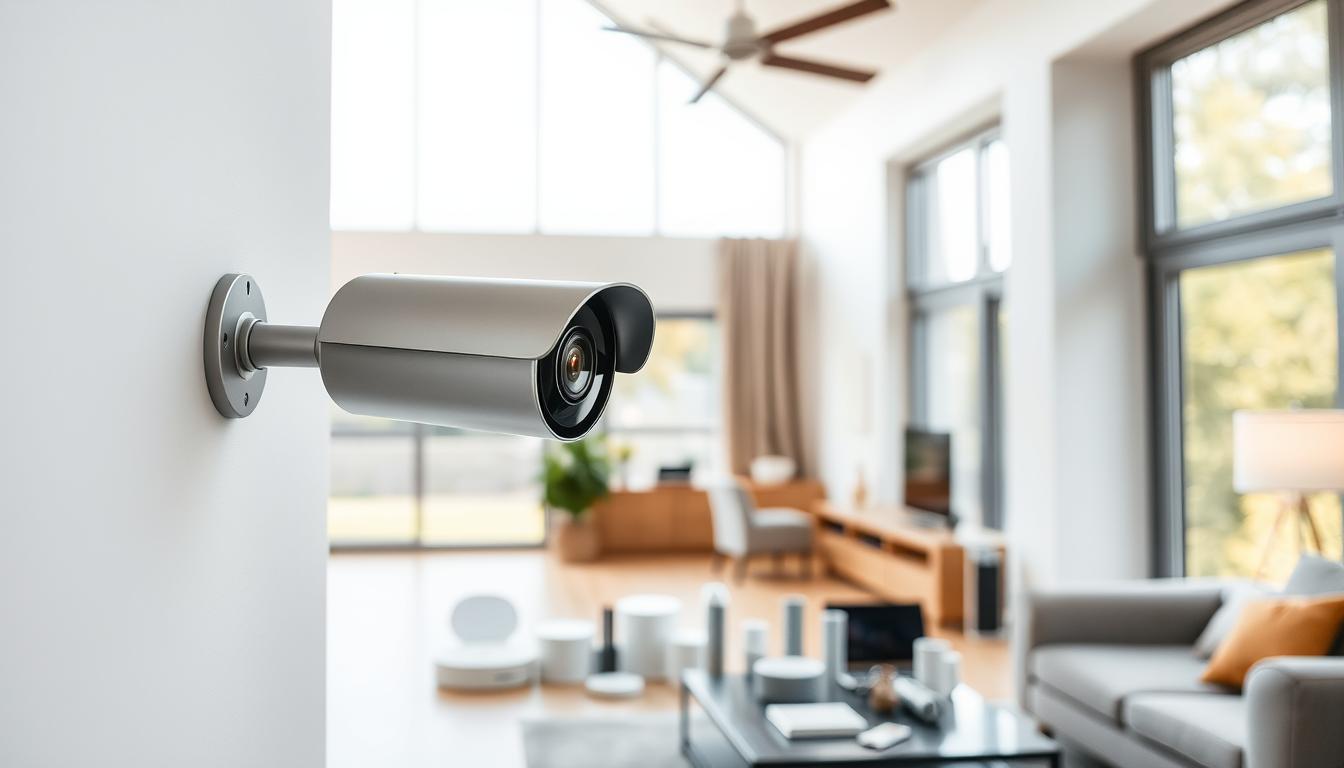
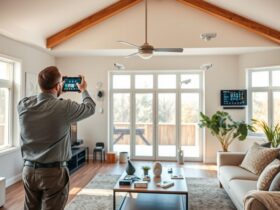
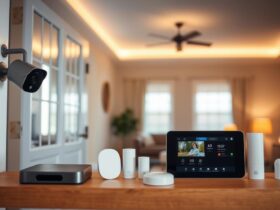
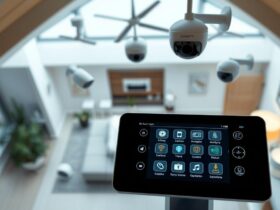
Leave a Reply